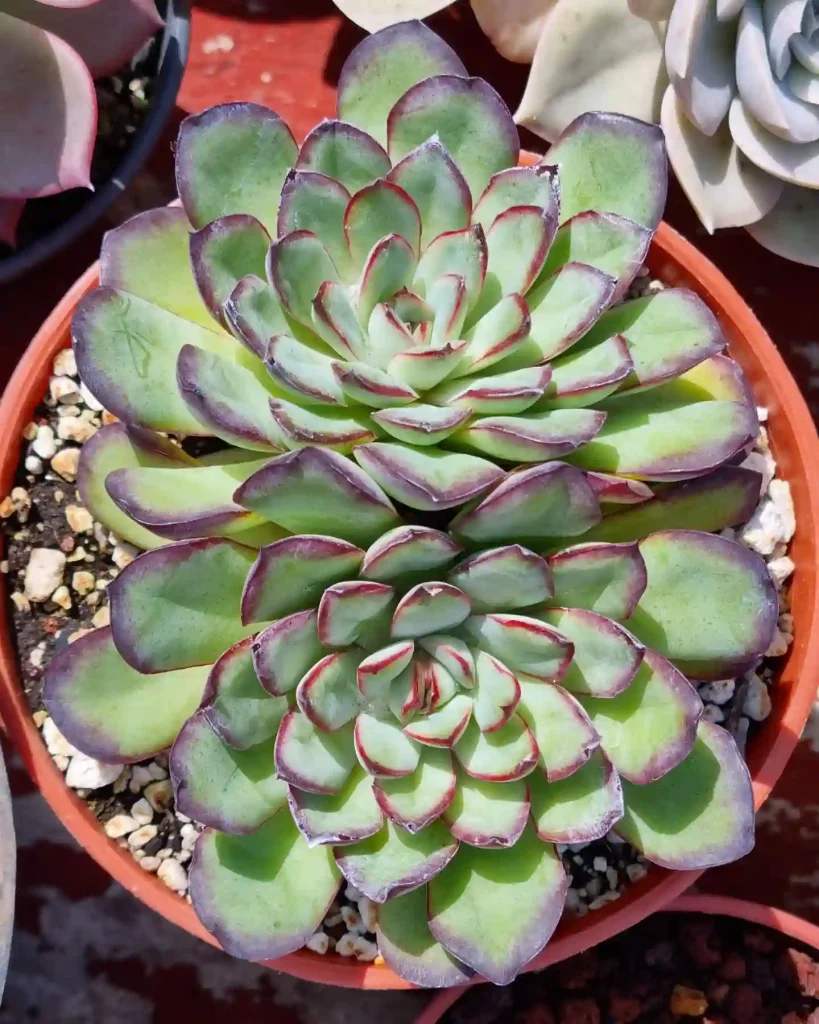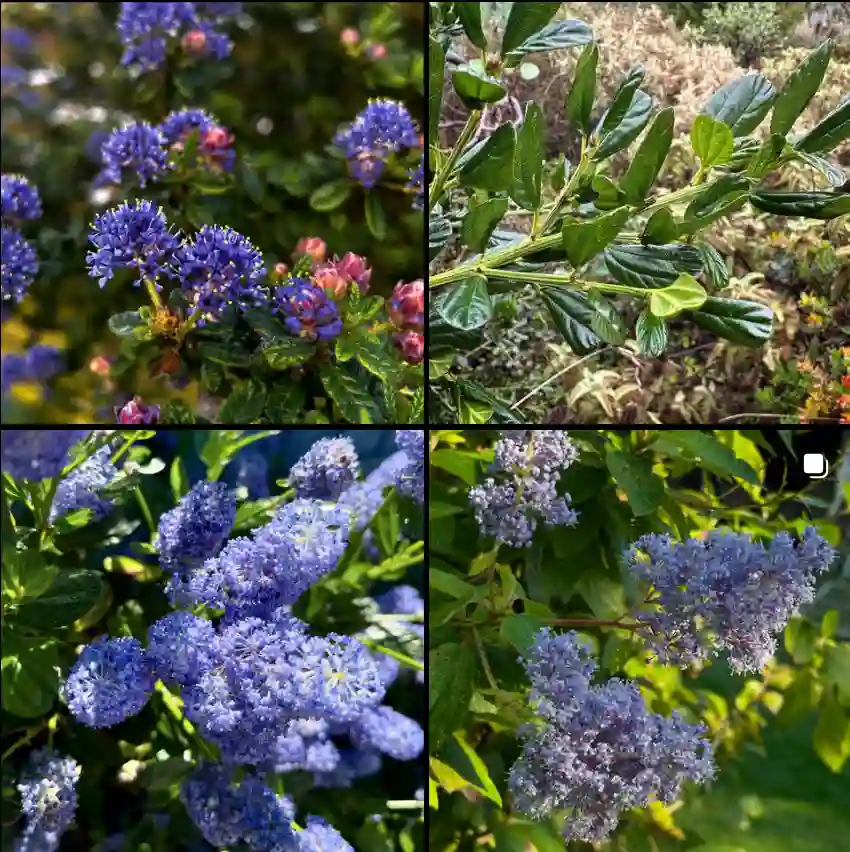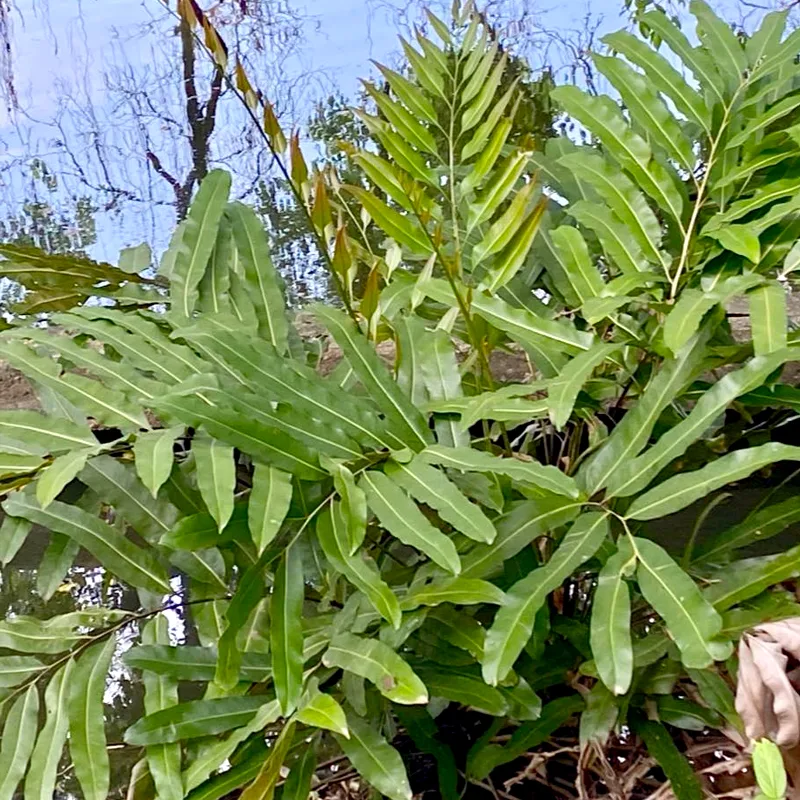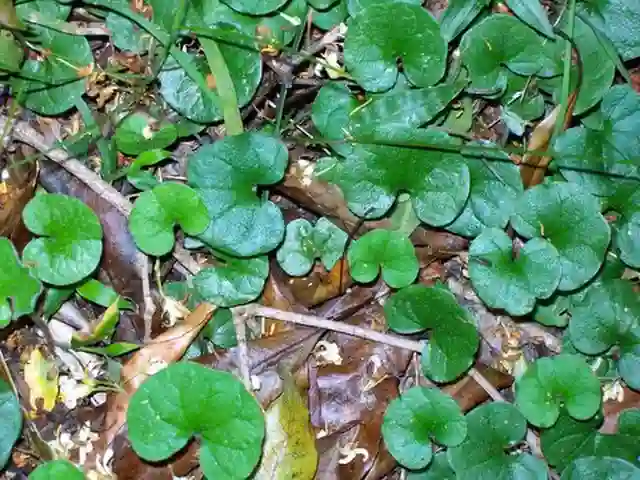
1. Introduction to Philodendron Spiritus Sancti: The Holy Grail Aroid
1.1. What is Philodendron spiritus-sancti?
The Philodendron spiritus-sancti is arguably one of the most iconic, rare, and highly sought-after species within the Philodendron genus. Its name, Latin for “Holy Spirit” or “Holy Ghost,” perfectly encapsulates its ethereal beauty and extreme rarity, making it a true “holy grail” for Aroid collectors. This plant is instantly recognizable by its extraordinarily unique leaves: long, narrow, and strap-like, often described as sword-shaped or even resembling a “donkey’s ear.” These leaves are a vibrant, glossy deep green, with a prominent central vein and subtle black lines radiating from it, especially on mature specimens. Native to a critically endangered habitat, its limited availability and distinct appearance contribute to its legendary status in the plant world.
1.2. Reasons for its Appeal
Philodendron spiritus-sancti captivates plant enthusiasts for several compelling reasons:
- Extreme Rarity: It is critically endangered in its native habitat and very rare in cultivation, making it a true collector’s item.
- Unique Leaf Morphology: Its exceptionally long, narrow, and strap-like leaves are unlike almost any other Philodendron, offering an elegant and distinct aesthetic.
- Iconic Status: Its “Holy Grail” status in the plant community adds to its mystique and desirability.
- Ethereal Beauty: The combination of its deep green color and unique shape gives it a sophisticated and almost mystical presence.
2. Origins and Distinguishing Characteristics
2.1. Native Habitat and Conservation Status
Philodendron spiritus-sancti is endemic to a very small and specific region in Brazil, primarily the state of Espírito Santo, near the town of Domingos Martins. Historically, some sources also mentioned parts of southeastern Ecuador and northern Peru, but the Brazilian location is most consistently cited. It grows at elevations of approximately 800 meters above sea level. In its natural environment, it is a hemiepiphytic vine, meaning it can start life in the ground or on trees, eventually growing up tree trunks and branches in warm, very humid rainforests.
Unfortunately, Philodendron spiritus-sancti is a critically endangered species (listed on the IUCN Red List) due to severe habitat destruction and over-collection. It is believed that more plants are currently held by private collectors than remain in the wild. Remaining wild specimens are closely guarded.
2.2. Leaf Morphology and Mature Characteristics
The most defining characteristic of Philodendron spiritus-sancti is its unique leaf structure. The leaves are:
- Shape: Long, narrow, and strap-like, often described as sword-shaped, elongated heart-shaped, or even “ear-like” with distinct basal lobes (sometimes referred to as “ears”). They can reach impressive lengths of 22-25 inches (57-63 cm).
- Color & Texture: Vibrant, glossy deep green. Mature leaves may feature a pale green central leaf vein with subtle black lines radiating from it.
- Variability: Leaf blade width can vary, with cultivated forms sometimes displaying narrow or broad leaves.
2.3. Growth Habit and Rate
Philodendron spiritus-sancti is a hemiepiphytic vine. While it can climb, its tendency is to “snake” or slowly ascend, often growing best as an epiphyte in tree crotches or on rocky walls in its natural habitat (rupicolous growth). Indoors, it benefits from extremely porous soil that drains very quickly or can be grown epiphitically on a moss pole or wooden support.
Its growth rate is generally considered slow, especially compared to many other Philodendrons. It can take a significant amount of time before substantial new leaf growth is observed, and new leaves may initially be smaller or slightly deformed, especially after repotting. This slow growth, coupled with its rarity, adds to its challenging but rewarding cultivation.
2.4. Toxicity
Like most other Philodendron species, Philodendron spiritus-sancti is considered toxic to pets (cats, dogs) and humans if ingested. It contains calcium oxalate crystals, which can cause irritation and swelling of the mouth, throat, and digestive tract, leading to discomfort, vomiting, and difficulty swallowing. It is advisable to keep this plant out of reach of pets and small children.
2.5. Comparison to Similar Philodendrons
Philodendron spiritus-sancti is highly distinctive, making it difficult to genuinely confuse with other common Philodendrons. However, due to its rarity and desirability, some plants are sometimes misidentified or sold as hybrids. Key distinguishing features are its consistently long, narrow, strap-like leaves and completely green (non-variegated) appearance.
- Philodendron spiritus-sancti: Characterized by long, narrow, strap-like, deep green leaves (unvariegated) with a prominent central vein and sometimes subtle black lines. Stems are green (though can occasionally have a reddish tint depending on light/nutrients).
- Philodendron atabapoense: While it also has elongated leaves, they are typically dark green with a reddish underside and a slightly different shape (more lance-shaped). Stems are also green.
- Philodendron billietiae: Easily distinguished by its orange stems and broader, often slightly wider leaves with more rounded edges, and often prominent orange veins on the underside.
- Philodendron tortum: Features leaves that are also elongated and narrow, but they are deeply dissected into multiple slender, finger-like segments, giving a fern-like appearance, unlike the entire, strap-like leaves of P. spiritus-sancti.
- Hybrids (e.g., P. tortum x spiritus-sancti): Some hybrids exist that may combine traits, but a true P. spiritus-sancti will lack the extreme dissection of tortum or the specific stem/leaf characteristics of other species.
The purity of its green color and its unique, unbroken, elongated leaf shape are paramount for identifying a true Philodendron spiritus-sancti.
3. Comprehensive Care Guide: Nurturing Your Holy Grail Philodendron
Cultivating a thriving Philodendron spiritus-sancti demands meticulous and precise care, largely due to its sensitivity to environmental fluctuations and its inherent rarity. Patience is key.
Table 1: Quick Care Guide for Philodendron Spiritus Sancti
| Care Factor | Requirement Description |
|---|---|
| Light | Bright, indirect light (North/East window, filtered South/West). Avoid direct sun. |
| Temperature | Stable warm temperatures: 19-24°C (66-76°F). Avoid below 19°C (66°F) or drafts. |
| Humidity | High humidity (60-80% or higher). Crucial. |
| Watering | Keep consistently moist but not soggy. Allow top 1 inch to dry minimally. Ensure excellent drainage and airflow. |
| Soil | Very airy, extremely well-draining (orchid mix, chunky aroid mix: bark, perlite, coco coir, charcoal). |
| Fertilization | Balanced liquid fertilizer, diluted, monthly (or every 4-6 weeks) in spring/summer. Withhold in winter. |
| Pruning | Minimal, remove only yellow/damaged leaves. |
| Repotting | Every 1-2 years, or when root-bound, in spring. Use pot with good airflow (e.g., added side holes). |
| Support | Provide climbing support (moss pole/trellis) or allow roots to snake in pot. |
3.1. Light Requirements
Philodendron spiritus-sancti thrives in bright, indirect light, mimicking the dappled sunlight it receives in its native rainforest habitat. Place your plant near a window that receives bright, filtered light, such as a north or east-facing window. If placed near a south or west-facing window, use a sheer curtain to diffuse intense light or ensure the plant is a few feet away to prevent direct sun exposure. Direct sunlight can easily scorch its delicate leaves, causing irreversible damage. Insufficient light, on the other hand, can lead to slow growth and less vigorous overall health. Ensure the plant receives consistent light for at least 6 hours per day.
3.2. Temperature and Humidity
As a critically endangered tropical plant, Philodendron spiritus-sancti demands stable warm temperatures and high humidity.
- Temperature: It thrives when kept between 19-24°C (66-76°F), although it can tolerate a slightly wider range up to 27°C (80°F). It is extremely sensitive to cold. It is crucial to protect it from any temperatures below 19°C (66°F), even for short periods, as cold conditions can severely stress the plant, cause leaf damage (e.g., curling leaves), and inhibit growth. Avoid sudden temperature fluctuations and cold drafts from open windows, air conditioners, or heating vents.
- Humidity: High humidity levels, typically between 60-80% or even higher, are crucial for Philodendron spiritus-sancti to thrive and for new leaves to unfurl properly without deforming. While some sources suggest it can tolerate slightly lower humidity, consistent high humidity is essential. Consider using a room humidifier to maintain stable moisture levels. Grouping the plant with other moisture-loving plants or placing its pot on a pebble tray filled with water (ensuring the pot itself doesn’t sit in the water) can also help create a humid microclimate.
3.3. Watering Practices
Watering Philodendron spiritus-sancti is often considered the trickiest part of its care, as it is highly susceptible to root rot if overwatered, but also dislikes drying out too much. The key is to keep the soil consistently moist but never soggy.
- Frequency: Check the soil first before watering. Water thoroughly when the top 1 inch (2.5 cm) of soil feels just dry to the touch, or when the top half of the soil feels dry. Some growers recommend watering every 5-6 days. Avoid extreme fluctuations in soil moisture.
- Drainage: Ensure the pot has excellent drainage holes. Excess water must drain out completely. Do not allow the plant to sit in standing water in its saucer. Good airflow around the roots is critical.
- Water Type: Use non-calcareous water at room temperature, such as rainwater or filtered water, as hard tap water can lead to mineral buildup.
- Adjustments: Watering frequency will vary depending on environmental factors (light, temperature, humidity), pot size, and soil mix. Expect to water more often during the warmer, active growing months (spring and summer) and less frequently in fall and winter.
3.4. Optimal Soil Mix and Repotting
An extremely airy, very well-draining soil or orchid mix is critical for Philodendron spiritus-sancti. This mimics its epiphytic nature, where roots are exposed to open air and quickly receive water and nutrients from rainfall and fallen leaves. Soil should create ample air pockets and drain quickly.
- Recommended Mix: A good mix can include equal parts of large-chunk orchid bark, coarse-grade perlite, peat moss (or coco coir as a sustainable alternative), and optional additions of horticultural charcoal (about 10% to absorb impurities) and worm castings for organic matter. Sphagnum moss can also be used, especially for young plants or cuttings, as it helps maintain consistent moisture.
- Repotting: Repot your Philodendron spiritus-sancti every 1-2 years, or when it outgrows its current pot (e.g., roots growing through drainage holes). Spring is the best time. Choose a pot that is one size larger and ensures good drainage. Some growers add extra holes to the sides of the pot to improve airflow to the roots. Be aware that P. spiritus-sancti can experience transplant shock, with the next 2-3 leaves after repotting often appearing small or deformed. Patience is required during this recovery period.
3.5. Fertilization Strategies
Philodendron spiritus-sancti is not an overly heavy feeder, but it benefits from regular fertilization during its active growing season (spring and summer) to support healthy growth.
- Frequency: Fertilize monthly or every 4-6 weeks.
- Type & Dilution: Use a balanced liquid or water-soluble fertilizer (e.g., N-P-K ratio of 20-20-20), diluted to half the recommended strength to prevent over-fertilization. If using pure water (like distilled or rainwater), it’s crucial to provide a balanced fertilizer that includes essential macro and micronutrients (like calcium and magnesium) that might otherwise be found in tap water.
- Dormancy: Reduce or withhold fertilizer during the fall and winter months when the plant’s growth naturally slows down.
- Application: Always water the plant thoroughly before applying fertilizer to protect the roots from burn. Avoid fertilizing too close to the plant’s base (e.g., at least 15 cm away).
3.6. Pruning and Maintenance
Pruning for Philodendron spiritus-sancti is usually minimal, focused on maintaining plant health and shape.
- Pruning: Remove any yellowing, brown, or damaged leaves as needed. Trim back leggy growth if desired to encourage a bushier form or to control size. Pruning can be done throughout the year, but major cuts are best performed during the active growing season. Use clean, sharp scissors or pruners. Wear gloves when handling due to its toxicity.
- Support: Providing a moss pole, trellis, or other sturdy support is recommended for its climbing habit. While it is a slow climber with tight internodal spacing, training its aerial roots into the substrate or onto a pole early on will encourage better growth and stability. It can also be grown in a hanging basket, but its growth may be less vigorous.
- Cleaning: Regularly wipe the leaves with a damp cloth to remove dust, which improves light absorption and photosynthesis.
4. Propagation Techniques: Expanding Your Collection
Propagating Philodendron spiritus-sancti is possible, though it requires patience due to its slow growth. The most common and effective method is using stem cuttings. The best time for propagation is during the spring or early summer when the plant is actively growing.
4.1. Stem Cuttings
- Select a Healthy Stem: Choose a healthy, mature stem section that has at least two nodes and preferably a few leaves.
- Sterilize Tools: Always use clean, sharp, and sterilized pruning shears or a knife to make your cuts to prevent the spread of diseases.
- Make the Cut: Cut the stem just below a node. Remove any lower leaves that would be submerged in your chosen rooting medium to prevent rot.
- Rooting Hormone (Optional but Recommended): Applying a rooting hormone (powder or gel) to the cut end can significantly increase the chances of successful rooting and accelerate development.
- Rooting Medium Options:
- Water Propagation: Place the cutting in a clear jar with fresh water, ensuring the nodes are fully submerged. Change the water every few days to keep it clean and prevent bacterial growth. Roots may take several weeks to months to appear.
- Sphagnum Moss: Plant the cutting in moist, but not soggy, sphagnum moss. This medium provides excellent aeration and consistent moisture, which is beneficial for rooting.
- Airy Soil Mix: Plant the cutting directly into a small pot filled with a very well-draining, airy aroid mix. Keep the soil consistently moist but not waterlogged.
- Provide Optimal Environment: Place your cuttings in a warm location that receives bright, indirect light. High humidity (60-80% or higher) is crucial during propagation; consider using a humidity dome or placing the cuttings in a mini-greenhouse to create a high-humidity environment and prevent desiccation.
- Potting Up: Once a robust root system has developed (roots are a few inches long and well-branched), and new leaf growth is visible, your new plant is ready to be transitioned to a larger pot with its permanent potting mix. Be gentle to minimize transplant shock.
4.2. Seed Propagation (for advanced growers/conservation efforts)
While rare in cultivation, P. spiritus-sancti can be grown from seed. This method is primarily used in conservation efforts or by advanced hobbyists. Seed-grown plants may exhibit slight variations.
5. Troubleshooting Common Issues: Pests, Diseases, and Environmental Stress
Despite its resilience once established, Philodendron spiritus-sancti is sensitive to improper care and environmental fluctuations. Prompt identification and action are crucial for maintaining its health.
Table 2: Common Problems & Troubleshooting for Philodendron Spiritus Sancti
| Problem | Symptoms | Solutions/Treatment |
|---|---|---|
| Yellowing Leaves | Older, lower leaves turning yellow. | Overwatering (most common), insufficient light, nutrient deficiency, natural aging. Adjust watering, fertilize, check roots for rot. |
| Brown Crispy Edges/Tips | Leaves browning and feeling crispy at edges. | Low humidity, underwatering, direct sun exposure. Increase humidity, adjust watering, move to indirect light. |
| Drooping Leaves/Curling Leaves | Leaves losing turgor, looking limp or curled. | Underwatering (most common), severe overwatering (root rot), cold shock/drafts. Check soil moisture, inspect roots, ensure warmth. |
| Stunted Growth/Small/Deformed New Leaves | Very slow growth, new leaves are smaller or distorted. | Insufficient light, nutrient deficiency, transplant shock, low humidity. Provide bright indirect light, fertilize, increase humidity, be patient post-repotting. |
| Leggy Growth | Long stems with sparse leaves. | Insufficient light. Move to brighter location. |
| Pest Infestations | Visible pests (mealybugs, spider mites, thrips, scale), sticky residue, distorted growth. | Isolate plant, treat with insecticidal soap, neem oil, or appropriate pesticides. Increase humidity. |
| Root Rot | Mushy stem base, black/brown, foul-smelling roots, yellowing/wilting. | Overwatering, poor drainage. Repot, trim rotten roots, improve drainage/airflow, reduce watering. |
| Fungal Leaf Spot | Various spots on leaves. | Improve air circulation, reduce humidity if too high, remove affected leaves. Fungicides if severe. |
5.1. Watering Issues
- Overwatering: This is the most common and dangerous problem. Symptoms include yellowing leaves (particularly older, lower ones), black/brown spots on leaves, a mushy stem near the soil line, and a foul, moldy smell from the soil. This inevitably leads to root rot.
- Solution: Immediately allow the top 1 inch of soil to dry out completely between waterings. Ensure the pot has excellent drainage and good airflow around the roots. If root rot is suspected, unpot the plant, carefully trim any rotted, mushy roots with sterilized shears, and repot in fresh, extremely well-draining soil. Drastically reduce watering frequency until new growth appears.
- Underwatering: While less common than overwatering, it can still cause stress. Symptoms include drooping or curling leaves that do not perk up after watering, and general dull foliage.
- Solution: Increase watering frequency slightly. Ensure you are watering thoroughly so that water drains from the bottom of the pot, indicating the entire root ball has been moistened.
5.2. Light Issues
- Insufficient Light: Can lead to very slow growth, smaller leaves, leggy growth (long gaps between leaves on the stem as it stretches for light), and an overall less vigorous plant.
- Solution: Move the plant to a location that receives bright, indirect light (e.g., north or east-facing window). Consider supplementing with a high-quality grow light if natural light levels are consistently low for 8-12 hours a day.
- Too Much Direct Light: Harsh direct sun can easily scorch the delicate leaves, leading to brown, crispy patches or a faded appearance.
- Solution: Relocate the plant to a spot with filtered light, or use sheer curtains to diffuse intense sunlight.
5.3. Humidity and Temperature Stress
- Low Humidity: Often causes the leaf edges or tips to turn brown and crispy. New leaves may struggle to unfurl properly, becoming deformed or sticky. Curling leaves can also be a sign of low humidity.
- Solution: Increase ambient humidity using a humidifier (the most effective method). Grouping plants together or using a pebble tray can also help.
- Cold Stress: Exposure to temperatures below 19°C (66°F), or sudden cold drafts, can severely stress the plant, leading to leaf damage, wilting, and overall decline.
- Solution: Ensure the plant is in a consistently warm environment (19-24°C is ideal) and protected from cold drafts from windows, doors, or air vents.
5.4. Pests
Common houseplant pests like mealybugs, spider mites, thrips, and scale can occasionally infest Philodendron spiritus-sancti.
- Symptoms: Visible insects (mealybugs with white, cottony masses; spider mites with fine webbing; thrips with silver streaks and black frass; scale with hard, immobile bumps), sticky residue (honeydew), or speckled, distorted leaves.
- Solution: Regularly inspect your plant, especially the undersides of leaves and stem crevices. Isolate infested plants immediately. Treat with appropriate organic pest control methods such as insecticidal soap, neem oil, or by wiping pests off with an alcohol-dipped cotton swab. Increasing humidity can help deter spider mites.
5.5. Diseases
- Root Rot: This is the most common disease, almost always a result of overwatering and poorly draining soil.
- Symptoms: Yellowing, wilting leaves (even when the soil is wet), a mushy stem near the soil line, and black/brown, foul-smelling roots.
- Solution: Immediately remove the plant from its pot. Carefully inspect the roots and prune away all affected (mushy, black) sections with sterilized shears. Repot the plant in fresh, extremely well-draining aroid mix with enhanced airflow, and adjust your watering schedule to allow the soil to dry adequately between waterings.
- Fungal Leaf Spot: Can appear as various spots on the leaves.
- Solution: Improve air circulation around the plant, reduce overly high humidity (if it’s stagnant), and remove affected leaves. Fungicides may be used in severe cases.
6. Conclusion: Enjoying Your Thriving Philodendron Spiritus Sancti
Philodendron spiritus-sancti, with its unique, elongated leaves and critically rare status, is a truly iconic and rewarding plant to cultivate. By consistently providing it with bright, indirect light, precise watering (consistently moist but never soggy in extremely airy soil), high and stable humidity, and warm temperatures, you can ensure your ‘Holy Grail’ Philodendron thrives. While it demands meticulous attention and patience, the immense satisfaction of nurturing its unparalleled beauty and witnessing its slow, deliberate growth will bring immense satisfaction and a distinctive, almost sacred touch to your indoor space. Its survival in cultivation is a testament to dedicated growers.
If i die, water my plants!



